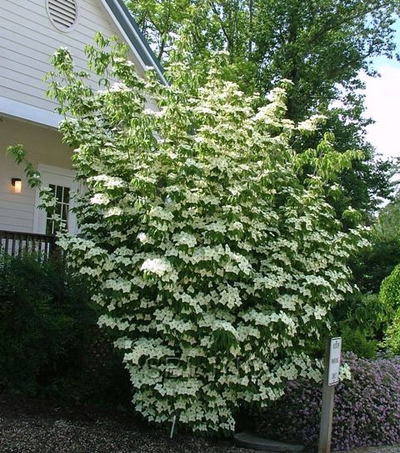

Play Value: Screening Wildlife Cover/Habitat Wildlife Food Source Wildlife Nesting Particularly Resistant To (Insects/Diseases/Other Problems): Deer, Rabbits, Erosion Dimensions: Height: 8 ft. Members of the genus Cornus support the following specialized bees: Andrena (Gonandrena) fragilis, Andrena (Gonandrena) Integra, and Andrena (Gonandrena) platyparia. The fruits are attractive to birds, and the shrub provides nesting sites. Attributes: Genus: Cornus Species: alba Family: Cornaceae Life Cycle: Woody Recommended Propagation Strategy: Root Cutting Country Or Region Of Origin: Central and Eastern Asia Distribution: Native: Central European Russia, China North Central, China Southeast, East European Russia, Inner Mongolia, Korea, Manchuria, Mongolia, North European Russia, West Siberia, and Yakutskiya Introduced: Europe-Bulgaria US-IL Wildlife Value: The flowers attract butterflies and pollinators.Tags: #cultivars #deciduous #small spaces #white flowers #wildlife plant #weedy #low maintenance #spring flowers #winter interest #fall interest #accent plant #rabbit resistant #erosion control #showy stems #showy fruits #specialized bees #fast growing #privacy #flowering shrub #deer resistant #thickets #children's garden #red stems #screening #pollinator plant #naturalized area #nesting sites #fruits summer #food source summer #food source fall #white fruits #walkway planting #wet soils tolerant #patio planting #bird friendly #bee friendly #shrub borders #red bark #food source winter

'Argenteo-marginata', 'Byboughen', 'Gouchaultii', 'Sibirica' Leaves variegated with yellow and pink margins, bright red twigs in the winterĬoral red stems. See this plant in the following landscape: Cultivars / Varieties:īeautiful variegated foliage with broad white margins Please consider your planting site carefully. This shrub is more vulnerable to diseases in hot summer climates, especially south of USDA Zone 7. The plant is weedy, and its suckering can make it difficult to remove. Other diseases include powdery mildew, leaf spot, canker, root rot, and leaf and twig blight. When stressed, the shrub is susceptible to a large number of disease problems. Insects, Diseases, and Other Problems: Leaf miner and scale are less serious potential insect pests. clusters of white drupes with a bluish tinge.fall foliage yellowish to reddish-purple.dark green leaves and upper surface has wrinkled appearance.red stems during the fall and winter, greenish-red stems during the summer.a multi-stemmed shrub with arching and erect habit.Site shrubs as accents in areas where key ornamental features and the vibrant red stem color can be appreciated like near a patio or along a walkway. The showy stems provide winter interest in the landscape.įoliage: Fall Bloom: Spring Fruits: Mid-Summer Twigs: Winter Mass plant them to use as a property line screen, hedge, or in a shrub border. Naturalistic plantings in moist soils where plants are allowed to spread and form thickets will make for a low-maintenance landscape that prevents erosion. butterflies, and other pollinators. This plant is resistant to browsing by deer and rabbits.

The Tatarian dogwoods fruits attract birds, and the stems provide nesting sites. In the spring, the oldest stems should be removed to encourage new growth. The best blood-red color appears on the new stems. It is tolerant of a range of soil conditions. The shrub prefers full sun to partial shade in moist, well-drained soil. The species name, alba, means "white." This references the white fruits. The genus name, Cornus, is from the Latin word, cornu, which means "horn,' referencing the hardness of the wood. Tatarian dogwood is native to eastern and central Asia or in areas inhabited by Tatars. Tatars are members of the Turkic ethnic group that live in Tatarstan, parts of Russia, and Ukraine. It tends to sucker to form large colonies, so root pruning may be necessary. It has an upright and loose form that arches with long unbranched stems as it ages. It can be pruned to grow as a small tree. It is grown for its ornamental value and winter interest. Tatarian dogwood is a shrub in the Cornaceae or dogwood family. Phonetic Spelling KOR-nus AL-ba Description


 0 kommentar(er)
0 kommentar(er)
